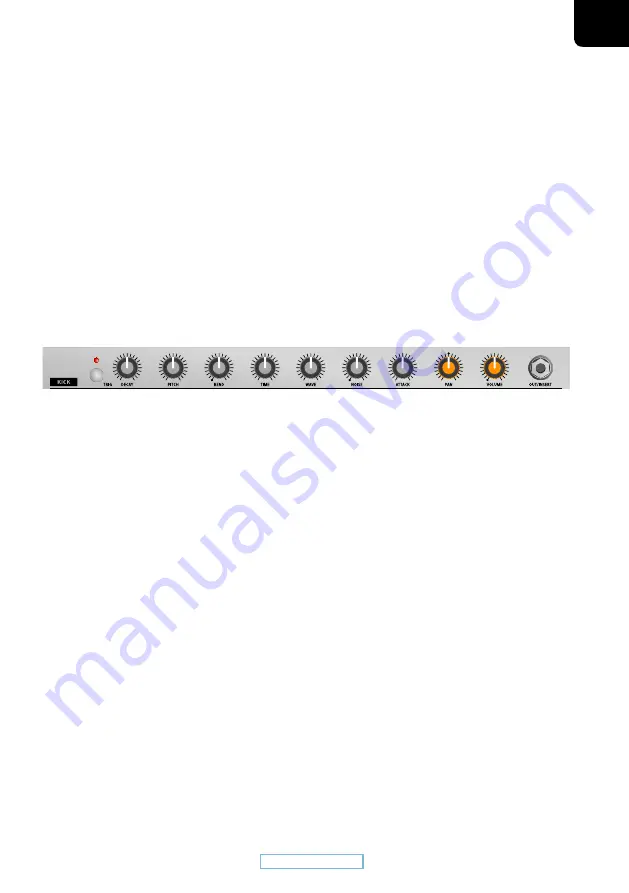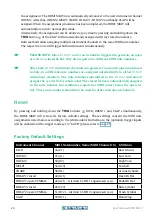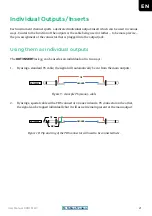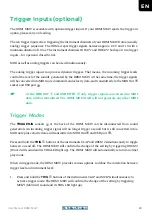
The instrument channels of the DRM1 MKIV
The eight instrument channels are tailored to generate specific drum sounds. However, thanks
to their flexibility, you are explicitly asked to experiment and be creative. As you will see, each
instrument channel offers a plethora of different sounds.
☛
Please note: Some parameters of a sound interact with each other. For example,
the
TIME
control of the kick drum described below only produces an audible effect
when the
BEND
knob is not turned fully counterclockwise. A similar response
can be found with almost all instruments and should be kept in mind and used
creatively when setting up sounds.
KICK
Figure 3: KICK instrument channel of the DRM1 MKIV
The first channel is specifically designed to produce bass drum sounds.
DECAY
sets the duration of the sound until total decay. The first half of the control’s travel
allows for creating punchy kick drums for dance music. When moving away from the
center setting of the control, single kicks will make decay times increase significant-
ly. These sounds are often found in genres such as Hip-Hop or R’n’B. With
DECAY
set to maximum, long-decaying bass drums can be created which will make your
trouser legs flap. Use these for Trap, D’n’B, and Dubstep – BOOOOOOOM.
PITCH
sets the fundamental frequency of a sound. Of course, the lower range of this knob
is relevant when creating bass drums. Start at the 9 o’ clock position and go from
there. With
PITCH
set to a higher value, you may as well create tom and percussion
sounds using the KICK instrument channel.
PITCH
interacts with the parameters
BEND
and
TIME
.
BEND
adjusts the intensity of pitch modulation by the
TIME
envelope. Higher values will
increase the amount of modulation but also increase the perceived pitch of the
sound, especially with
DECAY
set to shorter values. View
PITCH
,
BEND
, and
TIME
as being interactive.
User Manual DRM1 MKIV
EN
11
Summary of Contents for DRM1 MK4
Page 1: ...USER MANUAL DRM1 MKIV...












































